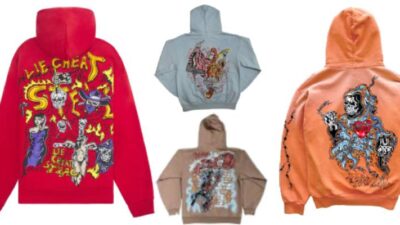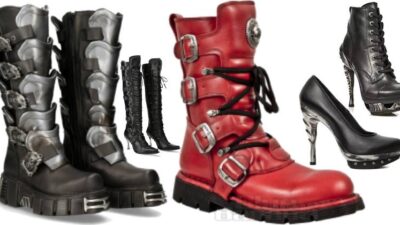Clothing for athletes has evolved significantly over the years, with a growing emphasis on performance-enhancing fabrics and innovative designs. Athletes, whether amateurs or professionals rely on their gear not only for comfort but also to gain a competitive edge. This article explores the world of athletic clothing, focusing on the importance of performance fabrics and cutting-edge designs in enhancing athletes’ performance. We will delve into the science behind these advancements and their practical applications across various sports.
Performance Fabrics
- Moisture-Wicking Fabrics
One of the most critical aspects of athletic clothing is its ability to manage moisture effectively. Moisture-wicking fabrics, such as Dri-FIT, Climalite, and CoolMax, have become staples in athletic wear. These fabrics pull sweat away from the skin, allowing it to evaporate quickly, thus keeping athletes dry and comfortable during intense workouts or competitions. This moisture management not only prevents chafing but also helps regulate body temperature, reducing the risk of overheating.
- Compression Fabrics
Compression garments have gained popularity in recent years, especially among endurance athletes. These garments, typically made from a blend of spandex and nylon, provide a snug fit that exerts pressure on the muscles. This compression aids in reducing muscle vibration, improving blood circulation, and decreasing muscle fatigue. Athletes often wear compression sleeves, tights, or socks to enhance performance and reduce the risk of injury.
- Breathable Materials
Athletes require clothing that allows for adequate ventilation to prevent overheating. Fabrics like mesh, microfiber, and perforated materials for sp5der hoodie are incorporated into sportswear designs to enhance breathability. These materials facilitate the flow of air, keeping athletes cool and comfortable during strenuous activities. Proper ventilation also helps to reduce odor and the accumulation of bacteria, ensuring hygiene during and after workouts.
Innovative Design Elements
- Ergonomic Design
Ergonomics plays a crucial role in athletic clothing design. The garments are tailored to fit the body’s natural movements, reducing friction and discomfort. This ergonomic approach extends to seams, stitching, and the placement of zippers and pockets. Minimalistic designs are favored to minimize distractions, ensuring that athletes can focus solely on their performance.
- Seamless Construction
Seamless garments have gained prominence for their ability to reduce chafing and irritation. Seamless construction involves knitting the fabric in a way that eliminates seams, creating a smoother, more comfortable fit. This design is particularly valuable for long-distance runners, cyclists, and other athletes prone to friction-related skin issues.
- Reflective Elements
For athletes who train or compete in low-light conditions, visibility is essential for safety. Reflective elements incorporated into athletic clothing designs help enhance visibility in the dark. These elements can be in the form of logos, stripes, or entire panels, ensuring that athletes remain visible to drivers and other individuals during early morning or nighttime activities.
- Temperature Regulation
Some athletic clothing designs incorporate phase-change materials (PCM) to help regulate body temperature. PCM in sp5der sweatpants absorbs, stores, and releases heat to maintain a comfortable body temperature during varying environmental conditions. This technology is especially beneficial for athletes in sports with extreme temperature fluctuations, such as outdoor winter sports or endurance events.
Practical Applications Across Sports
- Running
In running, performance fabrics like moisture-wicking materials and compression garments are commonly used to enhance endurance and speed. Innovative designs such as seamless construction and reflective elements contribute to a more comfortable and safe running experience, whether on the track or trail.
- Cycling
Cyclists benefit from moisture-wicking fabrics that keep them dry and comfortable during long rides. Compression garments help reduce muscle fatigue, while aerodynamic designs minimize air resistance. Reflective elements and temperature-regulating materials also play crucial roles in cycling apparel.
- Basketball
Basketball players require clothing that allows for agility, flexibility, and moisture management. Performance fabrics like Dri-FIT are used in jerseys and shorts to keep players dry and comfortable. Ergonomic designs ensure unrestricted movement, while breathable materials help regulate body temperature during fast-paced games.
- CrossFit
CrossFit athletes rely on moisture-wicking fabrics and compression garments to support their high-intensity workouts. Seamless construction reduces chafing during complex movements, and breathable materials help manage sweat. These innovative designs enable CrossFit enthusiasts to push their limits comfortably.
The evolution of athletic clothing has revolutionized the way athletes train and compete. Performance fabrics and innovative designs have become indispensable tools in an athlete’s arsenal, enhancing comfort, safety, and performance across various sports. As technology and research continue to advance, we can expect even more groundbreaking developments in athletic apparel, ultimately helping athletes achieve new heights in their endeavors. Whether you’re a professional athlete or simply someone who enjoys staying active, the right clothing can make all the difference in your athletic journey.










